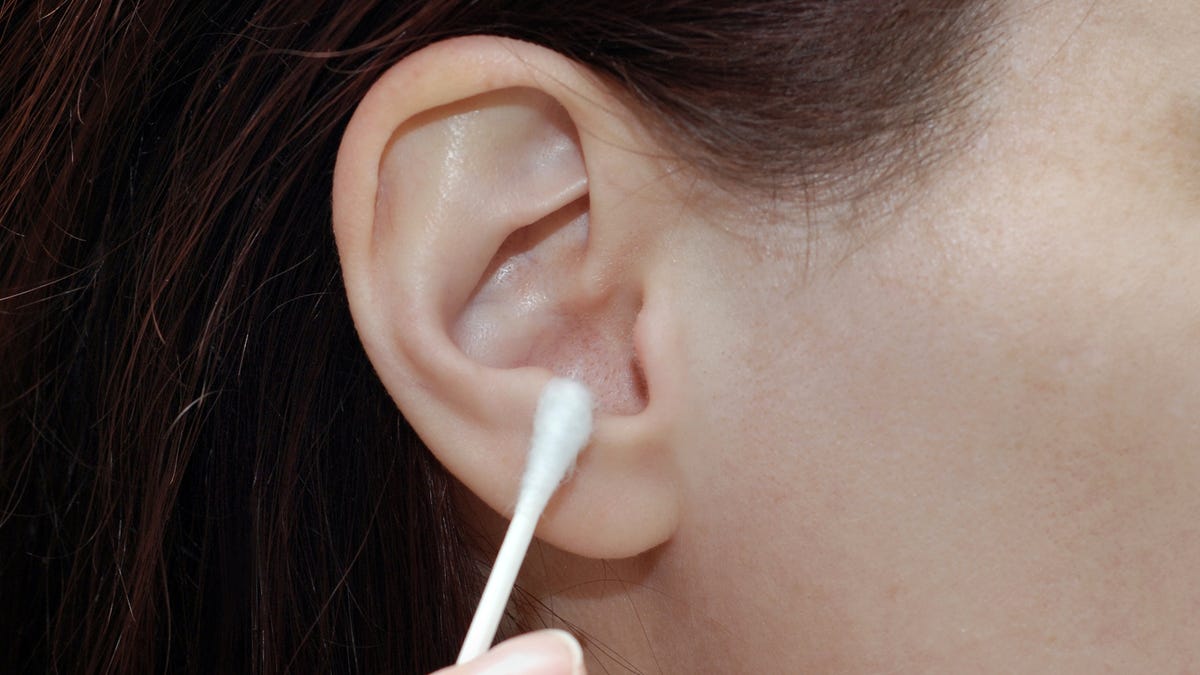How to Properly Clean Your Ears (and What Not to Do)

Ear wax is one of those things everybody has — and everyone finds a little gross. Nobody wants to find it building up on the outside of the ear canal, where others can see it or it may attach itself to your earbuds. It’s fine to clean your outer ear when ear wax gets unruly, but you should think twice before digging into your ear with a Q-tip or another ear-cleaning device. Most physicians recommend against cleaning your ears in this way, as you could cause serious damage. Here’s a look at why your ears are generally better left to clean themselves.
The truth about Q-tips
The cotton swab, better known as the Q-tip, is the most common device used for cleaning your ears. Its shortcomings illustrate the basic problems with using these types of instruments for ear wax removal.
Thanks to their long, narrow shape, Q-tips are better for pushing ear wax into your ear than pulling it out. When you attempt to use one to clean your ear canal, you risk simply compacting the ear wax and creating a blockage that makes it harder to hear.
Worse still, if you push a Q-tip too hard or too far into your ear canal, you may actually puncture your ear drum. The ear canal is only about an inch (2.5 centimeters) deep, so there’s not a lot of margin for error. One ear, nose and throat specialist CNET previously spoke to has even treated patients who seriously damaged their eardrums by answering the phone with a Q-tip sticking out of one of their ears. That’s a phone call that can truly ruin your day!
In general, it’s best to use cotton swabs — or even just a tissue or damp, clean rag — to clean the outer portion of your ear, outside the canal.
Ear cleaning 101
As gross as we may think it is, ear wax is actually essential to your ear health. According to Harvard Medical School, not only does it lubricate your ear canal and protect your eardrum, it also has antibacterial and antifungal properties. It naturally protects against harmful buildup, gathering dead skin cells and dirt as it gradually moves toward your outer ear on its own.
In other words, ear wax makes your ears naturally self-cleaning. In most cases, you don’t need to dig into your ear canals or do anything to clean them out — they’ll do the job on their own.
That said, some people produce more ear wax than others, and this can cause excessive buildup leading to discomfort or hearing trouble. Hearing aid wearers, in particular, can suffer from excessive ear wax buildup due to the extra vibrations in their ears. Whatever the cause, if ear wax is getting to you, it’s important to see a doctor and assess the best course of treatment.
If your doctor gives the thumbs-up, there are a few DIY ear-cleaning methods that can be done safely and effectively:
- Wipe with a damp washcloth: This is the safest and best method of all. You can’t really get inside your ear canal with your finger, and gently rubbing around the outside of it with a damp cloth is usually sufficient to clear out any ear wax buildup.
- Rinse your ear canal: If you think you may have some ear wax stubbornly lodged in your ear canal, you can often rinse it out, per Harvard Medical School. Soak a cotton ball in warm water, a saline solution, mineral oil or hydrogen peroxide, then hold it over your ear canal and tilt your opposite ear toward the floor. After you let it drip in and soak into the wax for a minute or so, tilt your head the other way and let the softened wax drip out.
- Try over-the-counter ear drops: These drops serve much the same function of “ear irrigation” as the above method but may also come with a dropper or bulb syringe. Doctors recommend avoiding the syringe if you have damaged your eardrum, as this can let water into the middle ear and put you at risk of serious infection.
What not to use to clean your ears
Although the above methods of ear wax removal can be done safely, there are some popular tools and techniques you should avoid. These may be popular on social media, but that doesn’t mean they’re safe for your ears.
- Ear candling: Ear-candling kits, which have grown in popularity in recent years, claim to soften wax and draw it out by lighting a flame on a long funnel that you place in your ear canal. According to Consumer Reports, this method is highly dubious among doctors. The Food and Drug Administration has long recommended against using ear candles due to the risk of burns, punctures and more.
- Ear-cleaning kits that can go deep into the ear: Some kits offer tiny spade-like or drill-shaped tools that promise to pull wax out of your ear canal. However, doctors urge caution with these types of instruments. Some of them can go dangerously deep into your canal, while others are sharp enough to cut your ear canal.
- Any sharp objects: As noted above, it’s best to avoid anything sharp, whether it’s a store-bought tool or a bobby pins. Cuts can cause bleeding and scabbing, which can obstruct your hearing and expose you to infection.
Who shouldn’t clean their ears at home?
Those with diabetes or who rely on blood thinners should be especially cautious about cleaning their ears. These conditions make it more difficult to stop bleeding, and that’s particularly problematic if you get tiny cuts inside your ear from cleaning it too roughly.
Those aren’t the only people who should think twice before digging into their ears, though. In most cases, it’s best to leave ear-canal cleaning to the professionals. They have better tools and a better view and can help you remove ear wax safely.
Source: CNET















